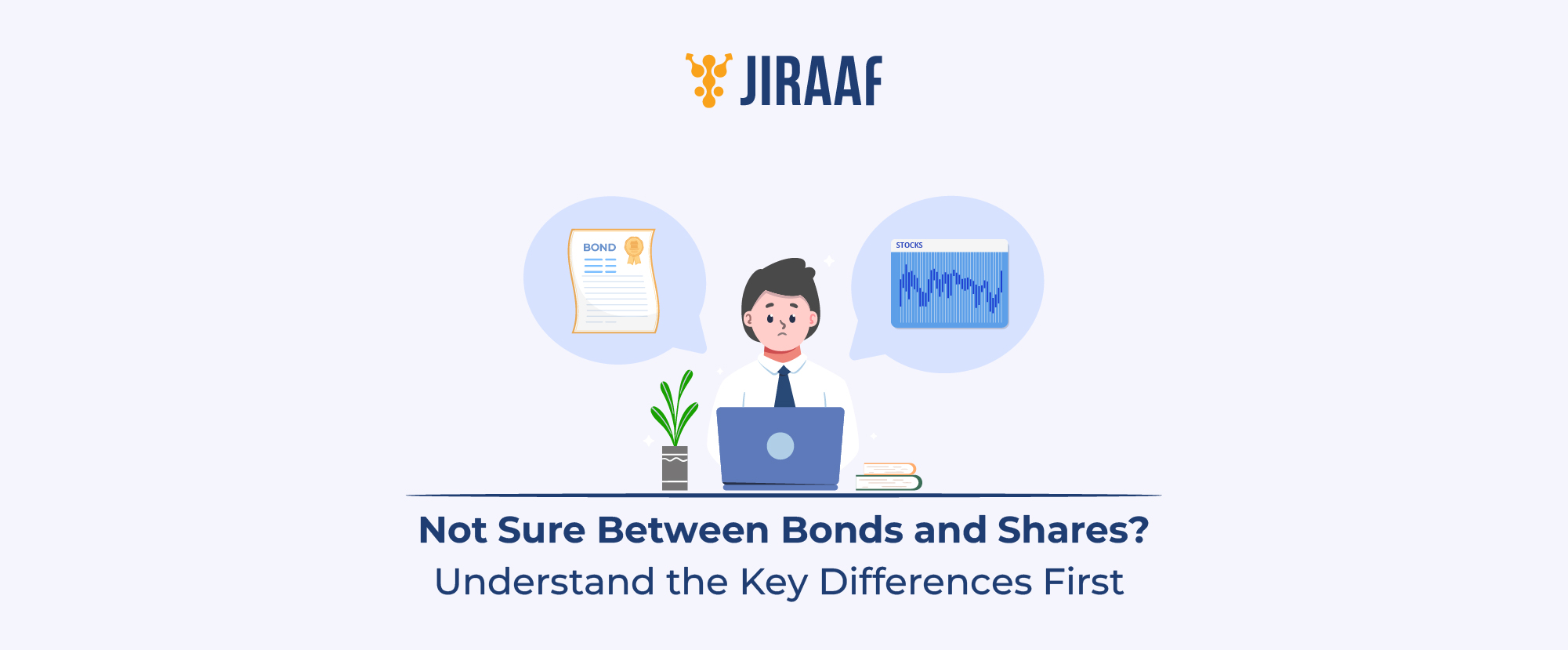Imagine finding a wallet full of cash with no name on it. Whoever holds it, owns it. No questions asked, no identity checks, just pure possession. There’s no name written on it, so the one who finds it becomes the owner. Sounds unusual in today’s regulated financial world, right? That’s exactly the kind of intrigue bearer bonds bring in, because they work in a very similar way.
A bearer bond is a financial instrument where ownership belongs to whoever physically holds the bond certificate. Unlike regular bonds that are linked to your name or account, these bonds are completely anonymous—no records, no trails. If you hold the bond, you’re the legal owner.
So how did these instruments function, why were they once a preferred choice for investors, and what led to their decline? Let’s break it down step by step to understand the meaning, history, and relevance of bearer bonds in today’s financial world.
What Are Bearer Bonds?
A bearer bond is a bond that doesn’t carry a name—whoever holds it, owns it. In simple terms, bearer bonds are those bonds where the holder of the bond becomes the bearer of ownership, since they are completely anonymous. Unlike traditional bonds, which are registered under an investor’s name and tracked by banks or depositories, bearer bonds exist only in physical paper form. If the paper changes hands, so does the ownership.
This makes them different from the bonds we usually think of. Most bonds are stable in two ways: they promise fixed interest, and they have a fixed, recorded owner. Bearer bonds, however, are fixed only in their returns—the ownership can shift instantly, with no paperwork, no records, and no digital trail.
Now that we understand the bearer bonds meaning and how they work, a natural question arises—how did India deal with such instruments, and what’s their place today? Let’s explore their past, present, and future in the Indian context.
Bearer Bonds in India: Past, Present & Legality
Back in 1981, the Government of India launched the Special Bearer Bonds, 1981, under a special Act, with one clear aim, which was to bring undisclosed or “black” money into the formal economy. Each bond carried a face value of ₹10,000 and could be redeemed for ₹12,000 after ten years. In return, investors got not only a modest financial gain but also immunity from explaining the source of their funds.
The law went even further. Sections 3 and 4 of the Act protected bondholders from tax scrutiny under the Income Tax, Wealth Tax, and Gift Tax laws. Essentially, once you bought the bond, no questions were asked. This was controversial from the start and eventually reached the Supreme Court in the case of R.K. Garg vs Union of India. The Court upheld the scheme, reasoning that though it rewarded those with unaccounted money, it served a rational public purpose by drawing funds into productive use.
Critics, however, argued it was unfair. By granting immunity to tax evaders, the scheme overlooked honest taxpayers and, in their view, undermined the principle of equality enshrined in Article 14 of the Constitution.
The Special Bearer Bonds Act, 1981, has since been repealed, and the issuance of bearer bonds in India has ceased. Bearer bonds are no longer legally supported or redeemable in India. Concerns about misuse, anonymity, theft, and money laundering, along with international regulatory reforms, led to their complete phase-out. Today, India relies on transparent financial instruments like bank guarantees and performance bonds, which provide security while maintaining traceability and accountability.
As we have seen the definition of bearer bonds and how they work, lets draw a line of difference between bearer bonds and registered bonds
Bearer Bonds vs Registered Bonds – Key Differences
Let’s look at the key points of difference between bearer bonds and the regular registered bonds
| Feature | Bearer Bonds | Registered Bonds |
| Ownership | Belongs to whoever physically holds the paper certificate—completely anonymous | Ownership recorded with issuer or depository in the investor’s name |
| Interest Payment | Holder collects interest by detaching and submitting coupons manually | Interest is directly credited to the registered owner’s account |
| Principal Redemption | Redeemed only by presenting the original certificate in person | Automatically paid to the registered bondholder at maturity |
| Security | Risky—if lost or stolen, ownership cannot be proven or replaced | Safer—issuer can restore ownership using official records |
| Traceability | No paper trail; transactions are unrecorded and anonymous | Fully traceable with detailed records maintained |
| Regulatory Status | Largely phased out worldwide due to misuse in tax evasion and money laundering | Dominant in modern markets, supported by regulators for transparency |
| Market Trend | Rare, illiquid, mostly old legacy instruments | Widely used across governments and corporations globally |
As we have seen the major points of differentiation, let’s check and understand why they became such a hotbed for money laundering, it’s worth looking closely at how these bonds worked in practice.
How Bearer Bonds Work?
Bearer bonds are debt instruments issued by governments or corporations where the holder of the paper certificate is the owner. They function much like regular bonds, paying periodic interest (via attached coupons) and repaying the principal at maturity. The difference lies in ownership—there’s no registry, no records, no tracking. The bond belongs to whoever physically holds it.
Here’s how it played out:
- To collect interest, the bondholder would simply detach the coupon from the bond and present it at a bank.
- At maturity, the certificate itself was handed in to redeem the principal amount.
Example
Imagine the government issuing a ₹10,000 bearer bond with 10 years’ maturity at 6% annual interest.
- In the first year, the holder clips the coupon worth ₹600 and encashes it.
- This repeats every year until maturity.
- At the end of 10 years, the bondholder submits the certificate and receives back the ₹10,000 principal.
But here’s the twist: if midway, the bond is sold or simply handed over to someone else, the new person instantly becomes the legal owner. From that point on, they pocket the remaining coupons and ultimately the principal. That’s the essence of the bearer bond definition—possession is ownership.
Now that we’ve unpacked how bearer bonds worked in practice, the next question almost writes itself—can you still buy them today? We know they’ve lost legal ground in India due to concerns over misuse and money laundering, but what about outside India? Do some corners of the world or international markets still deal in these paper-based, anonymous instruments, or have they vanished everywhere?
Where to Buy Bearer Bonds and Are They Still Available?
Bearer bonds sound fascinating, but here’s the reality—they’ve largely disappeared from the financial world. For decades, regulators across the globe have seen them as tools for tax evasion, money laundering, and shadow transfers. That’s why most major economies banned their issuance long ago. Still, every now and then, you might hear whispers about old bearer bonds still floating around.
So, where can I buy bearer bonds today? The answer isn’t simple.
Some smaller offshore financial hubs, historically known for banking secrecy like parts of the Caribbean, Switzerland, and Luxembourg, had issued bearer bonds. However, these centers have tightened regulations significantly. Many jurisdictions now either ban their issuance or impose stringent controls and mandatory registration of ownership. What’s left is a niche, rare market often surrounded by complex regulations.
Occasionally, older bearer bonds show up in secondary markets through specialized brokers. But these trades are far from mainstream. They’re illiquid, heavily restricted, and come with significant risks which is why modern investors rarely touch them.
And in India? The chapter is firmly closed. Since the Special Bearer Bonds of 1981, these anonymous instruments have been banned outright. India has instead leaned into regulated and transparent alternatives. Ironically, the closest modern cousin you’ll hear about is the Electoral Bond which is not the same thing but equally debated for its anonymity in political funding.
And this naturally raises another interesting question: if some of these older bearer bonds are still in circulation, how is that even possible? Don’t such bonds expire at some point, or can they really keep trading hands decades later? Let’s explore that next.
Do Bearer Bonds Expire?
Every bearer bond comes with a story written on its paper—the face value, the coupon rate, and most importantly, the maturity date. On that date, the holder can walk up to the issuer or an authorized bank and redeem both interest and principal. In this sense, bearer bonds work just like regular bonds—except that ownership depends solely on who holds the certificate.
But there are exceptions. Some rare bearer bonds were issued as perpetual bonds, meaning they carried no maturity date and kept paying interest until the issuer decided otherwise. These are largely phased out today, but they add to the mystique that bearer bonds already carry.
Then comes the issue of unclaimed bonds. If a holder forgets or fails to redeem a bond at maturity, redemption may still be possible later, depending on whether the issuer recognizes it. For instance, in the U.S., bearer bonds issued before the 1980s are still redeemable through the Treasury, provided the original certificate and required documentation are presented.
In India, however, the answer is much clearer. Bearer bonds introduced under the Special Bearer Bonds Act of 1981 have been phased out completely. Even if someone still holds a certificate, it cannot be redeemed today. The Indian government has permanently shut the door on such anonymous instruments because of the risks tied to black money and misuse.
So, do bearer bonds expire? Globally, some may still survive in secondary circulation or remain redeemable decades later. But in India, their chapter has closed for good, leaving only lessons from the past and debates about transparency in finance.









